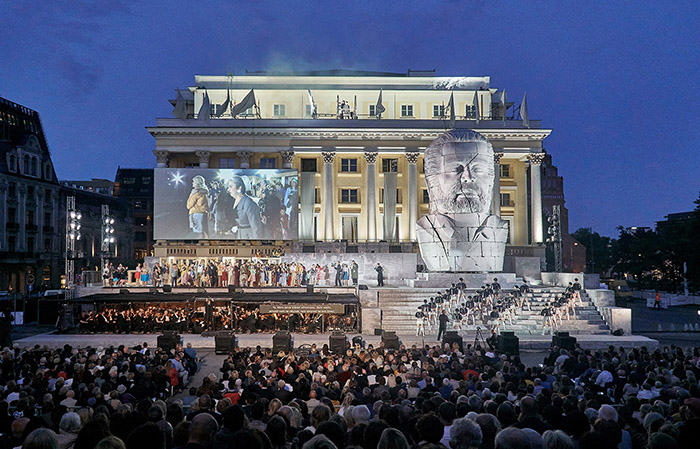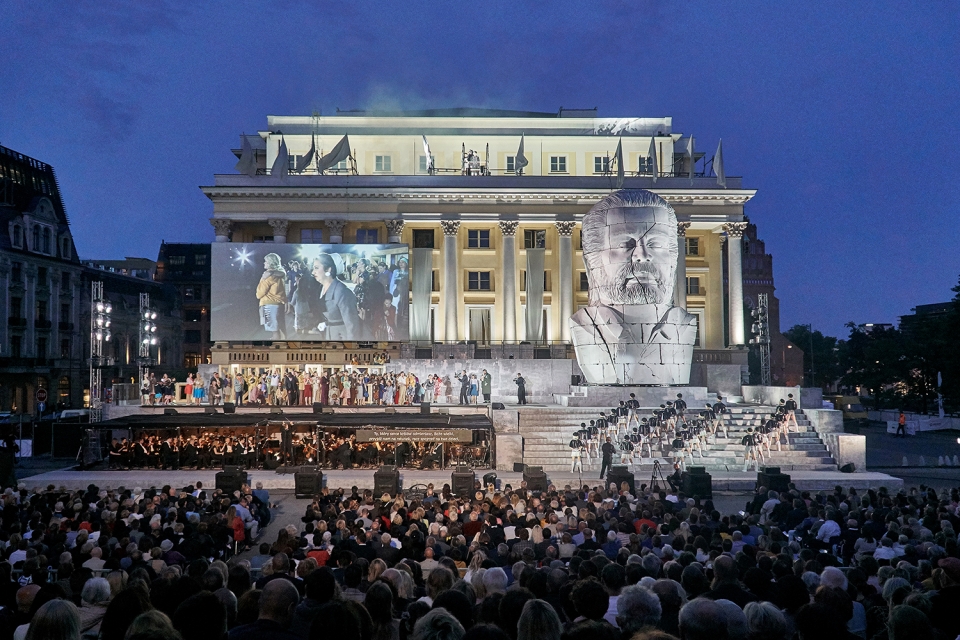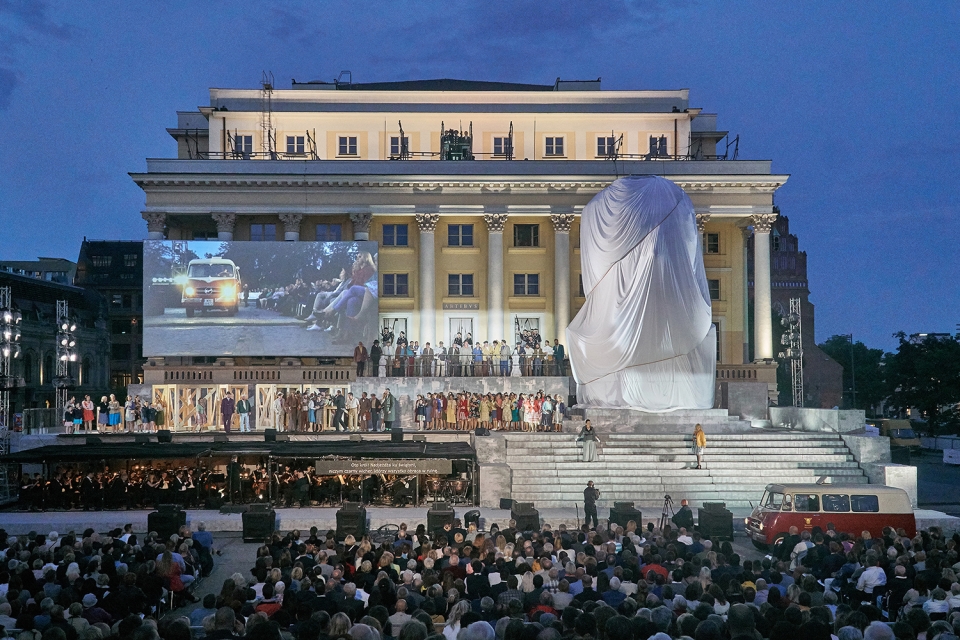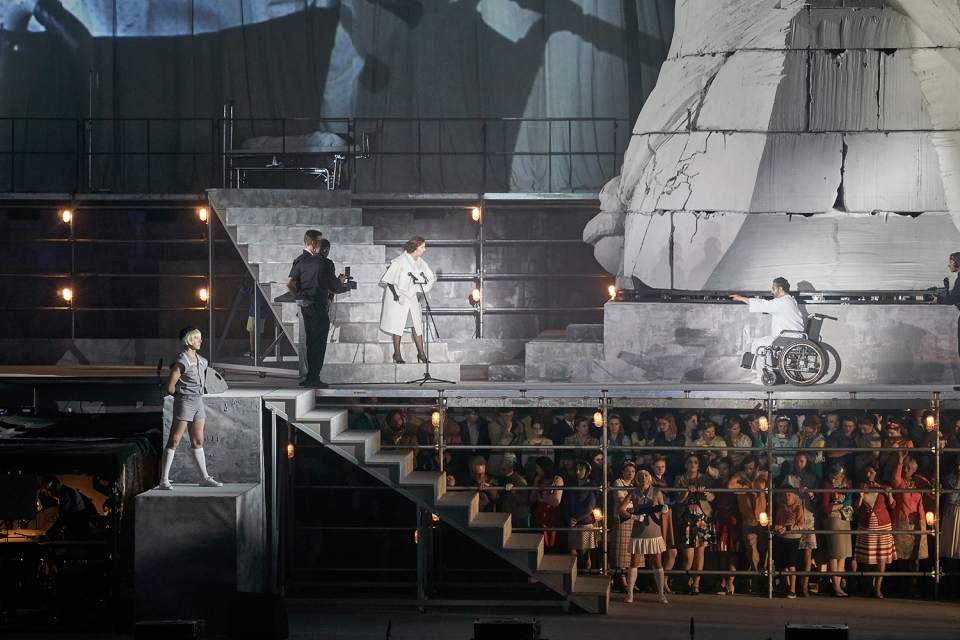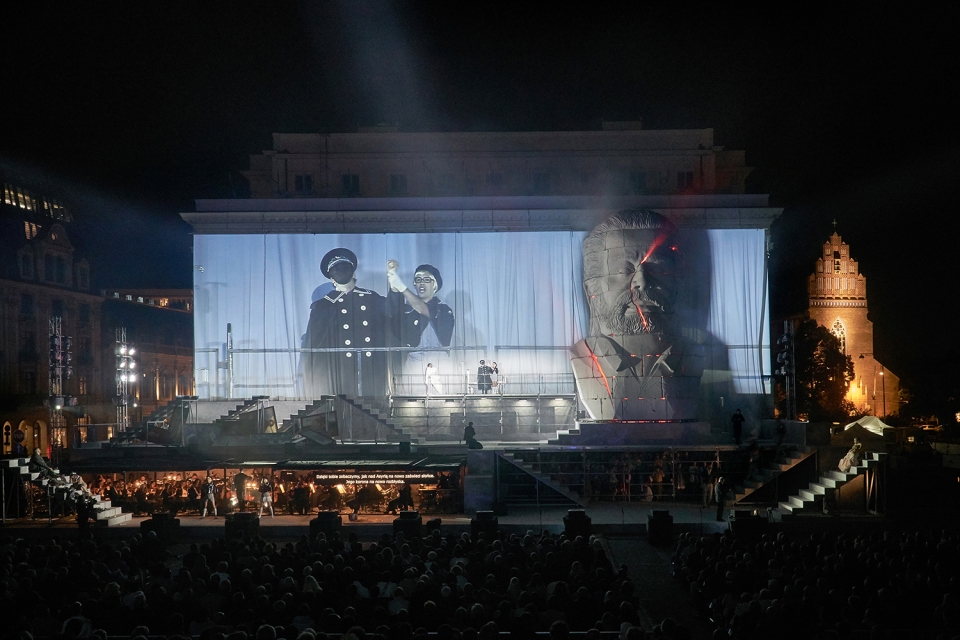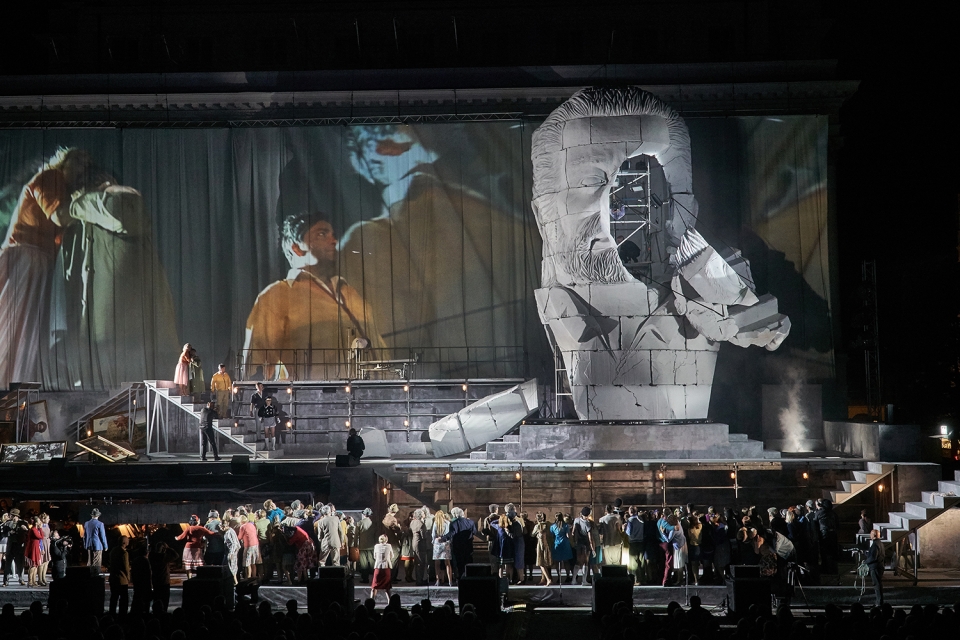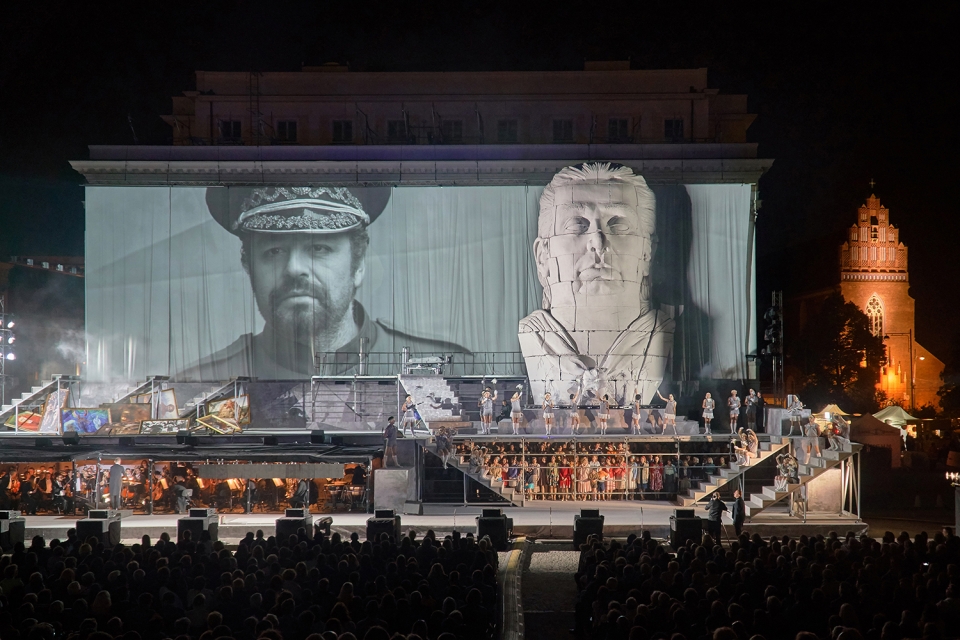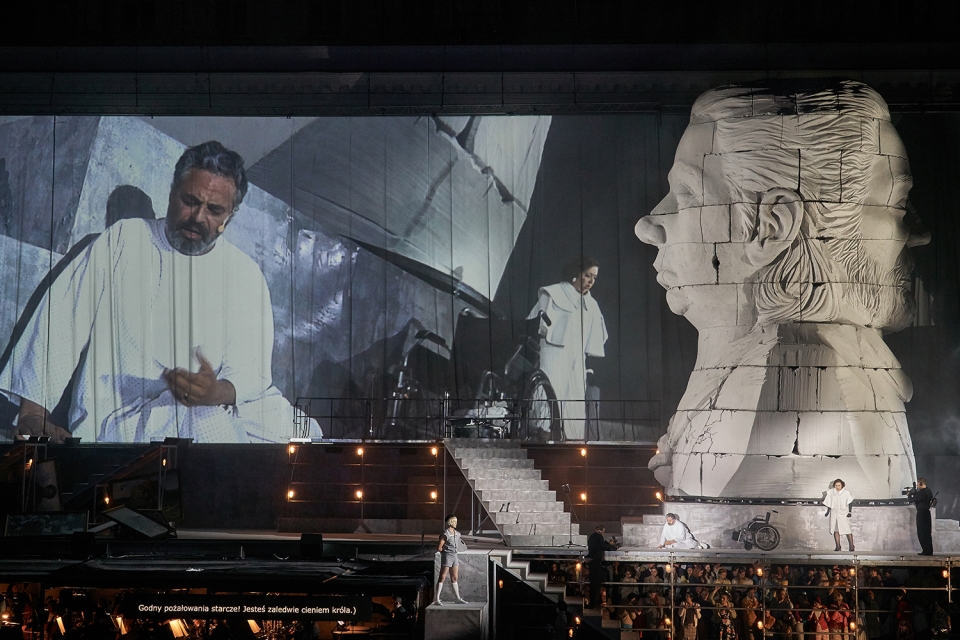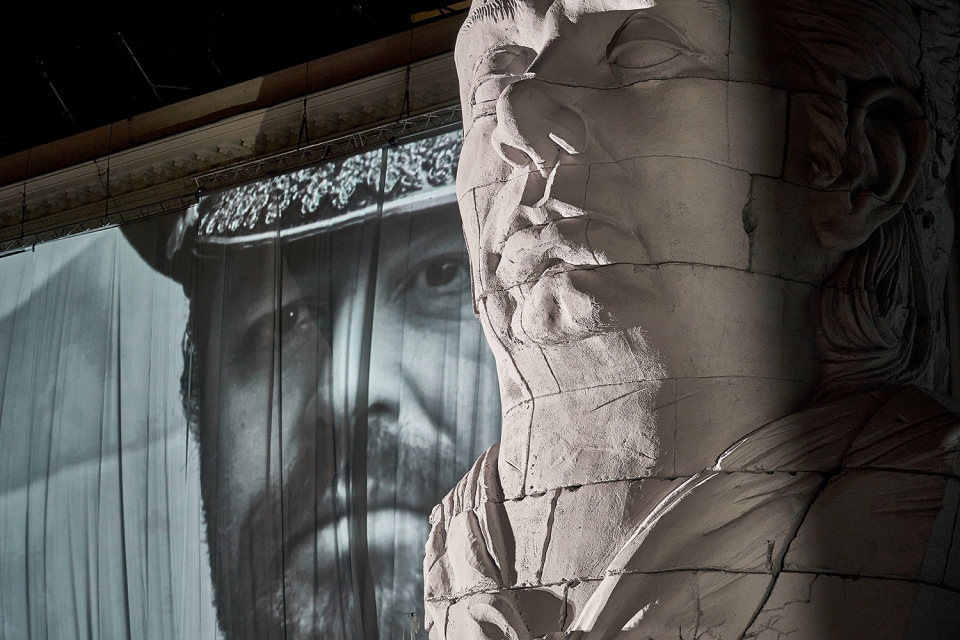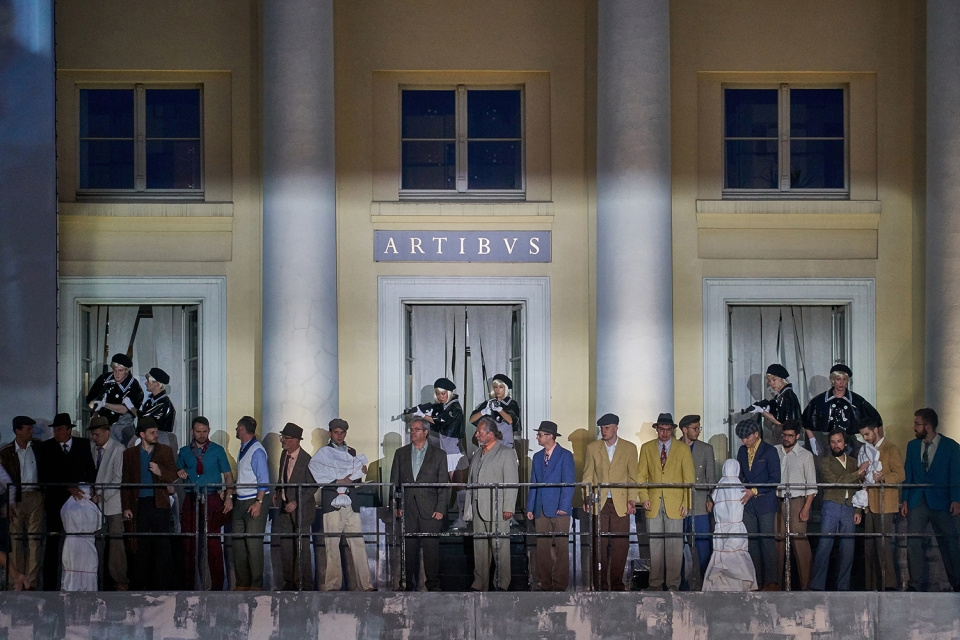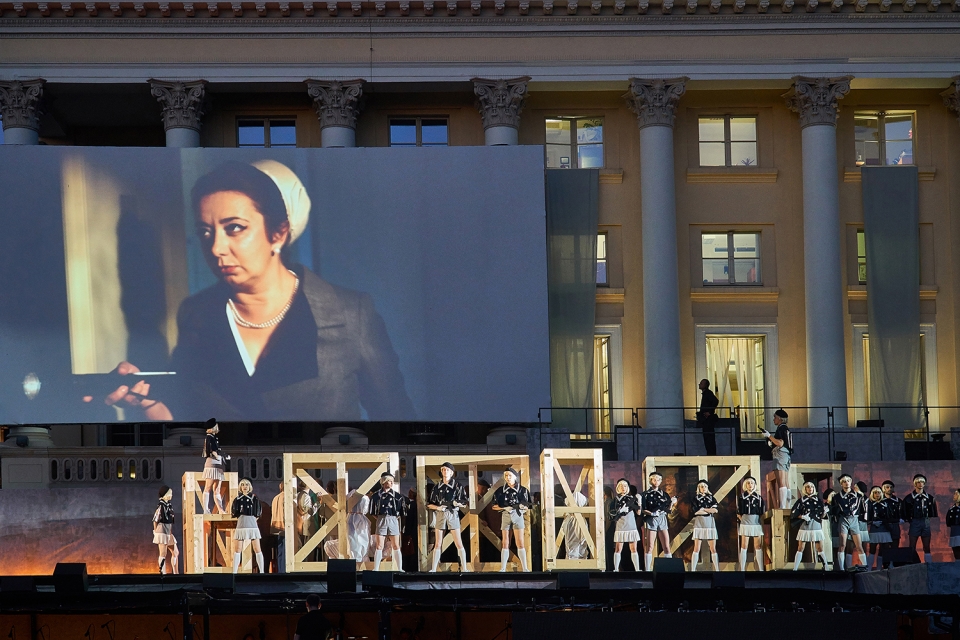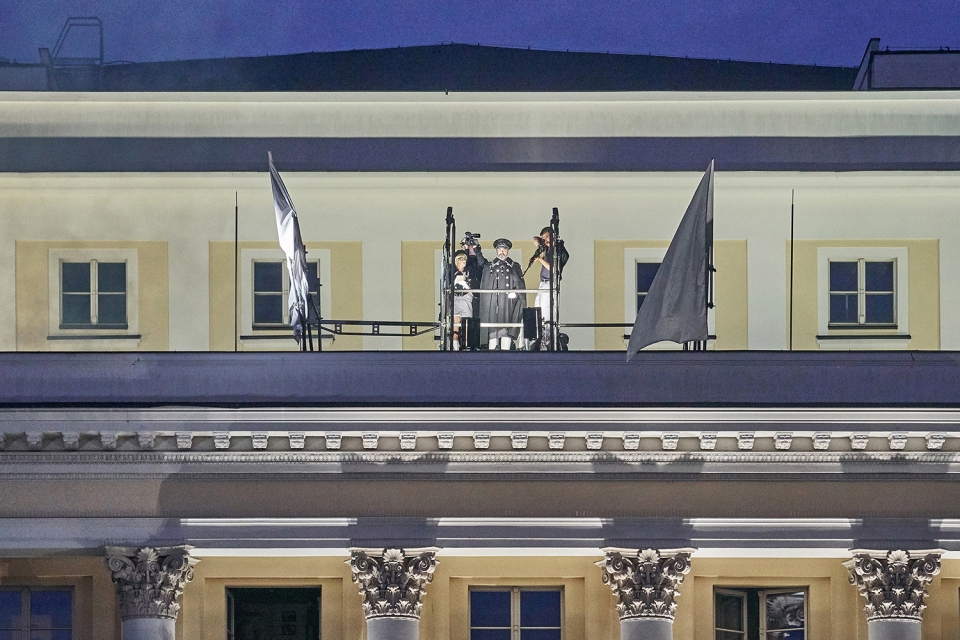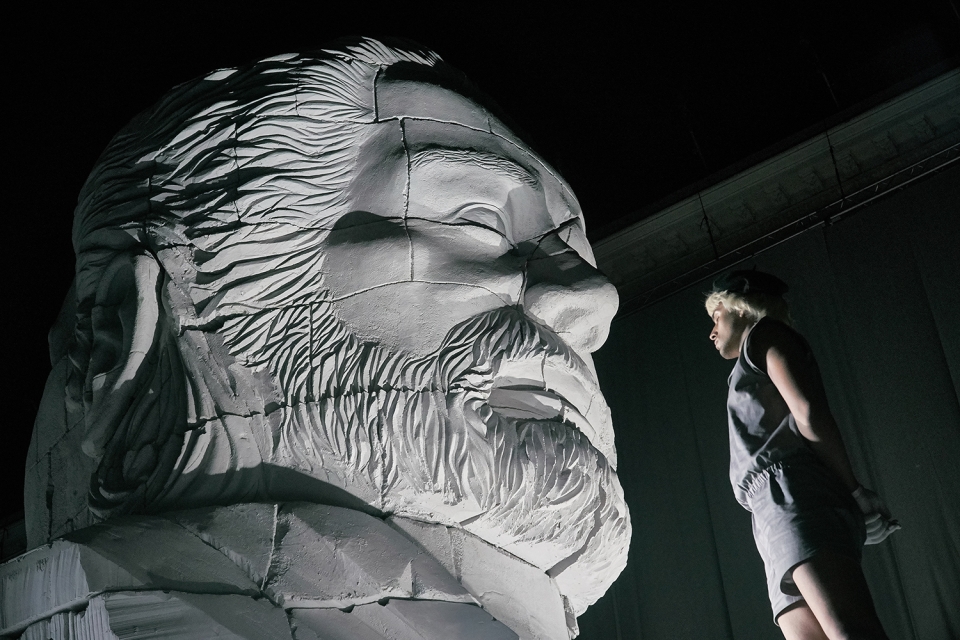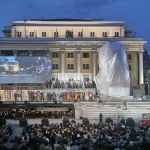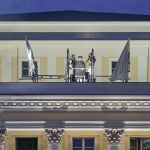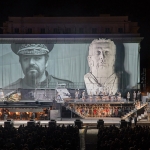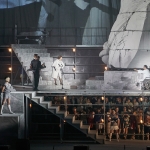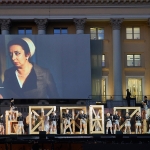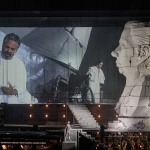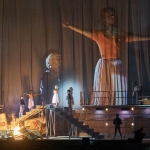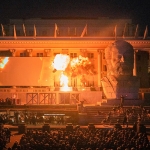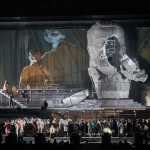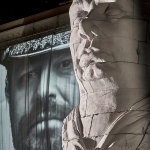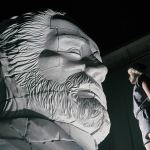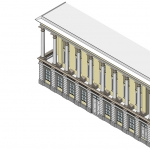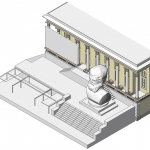非常感谢 Didzis Jaunzems Architecture 予gooood分享以下内容。更多关于他们:Didzis Jaunzems Architecture on gooood
Appreciation towards Didzis Jaunzems Architecture for providing the following description:
Nabucco为威尔第的成名作,设计师要用现代的舞台语言展现这部历史歌剧,在权力、政治和爱情的纠缠中寻找通用的社会机制。这次的舞台设在Wroclaw剧院,其旁边就是Monopol酒店,酒店的阳台是1937年专门为希特勒的访问建造的。歌剧便是在这里这里讲述巴比伦王国驱逐和囚禁犹太人的故事。
Staging of Nabucco is translation of historical layer of the libretto into the modern language of the theater, looking for universal social mechanisms that overlap with the problems of power, politics and love. Opera is presented in symbolic space, given the content of Verdi’s opera – expulsion of the Jews and the Babylonian captivity – between the site where the New Synagogue stood until 1938, the Balcony at Hotel Monopol built especially for Hitler and the surviving White Stork Synagogue.
舞台被设计成了一个多层的城市景观,包含平台和台阶。舞台空间延续Wroclaw剧院的立面,将其转变成了剧中的所罗门神殿。巴比伦王朝毁灭了这一文化象征,亦是摧毁了这个国家。原本鲜艳的色彩随着Nabucco的统治逐渐褪去,而在第二幕Abigaile夺取王位后到达顶峰,整个建筑都被盖在了灰暗的幕布之下。舞台上巨大的两面像高12米,重达2.5吨,其表情根据Nabucco和Abigaile的表演者制作。雕像会根据剧情的进展旋转、喊叫或从裂缝中发出光芒,并最终以跌落谢幕。
Stage is designed as an urban landscape with levels, platforms and stairs – a spatial continuation of Wroclaw opera façade that has been transformed into temple of art referring to libretto’s Temple of Solomon. It is attacked by a regime of Babylonians who want to exterminate a nation means by destroying the symbols of its cultural heritage. Just as to depose a dictator means to destroy his monuments. Colorful image of stage gradually fades into grayness once Nabucco takes over the building andculminates in 2nd part of opera when Abigaile becomes political leader – the whole building is covered with grey curtain.Giant two-face sculpture of 2,5t weight and 12m height is made with facial expressions of Nabucco / Abigaile soloists – Krum Galabov / Anna Lichorowicz. Sculpture responds to ongoing events on the stage: rotates, cries, shines light through cracks and collapses at the end of the performance.
为了拉近2100名观众和露天舞台之间的距离,并且在合唱场景和独唱场景之间流畅切换,舞台中设置了一个投影屏,通过埋设的相机放映剧中未讲述的故事。相机同时是媒体塑造政治系统的隐喻,过去和现在皆是如此。
To bring 2100 people audience closer to the large open-air stage as well as to navigate between large chorus scenes and intimate scenes featuring soloists, a video projection screens with live cameras was integrated in stage. Pre-recorded videos are illustrating untold stories of libretto. The cameras are also metaphor of the media actively shaping political systems and politicians, both in the present and in the past.
舞台的概念追求直观的比喻,如巴比伦清一色的灰色戏服。与之相对,犹太人的服装则使用了60年代服装可见的所有颜色。他们不是“群众”,而是一群“个体”;不是宗教团体,而是社会,是国家。
Staging concept is looking for intuitive metaphors – for example the concept of “gray mass”. Uniforms of Babylon take their individuality. On the other side of the barricade there are Hebrews who have costumes in the palette of all colors of the 1960s. It is not a mass, but a group of individualized figures. Not a religious community, but a society, a nation.
采用几十年前的审美风格亦为人们留出了审视自我的空间。60年代是波兰历史的一个重要节点,那时,和Nabucco一样,政治和信仰是社会讨论的焦点,在历史上留下了浓墨重彩的一笔。
Moving the aesthetics of the scene a few decades back opens a space in which this archaicity could function and creates the distance necessary to look at ourselves. The 1960s is also an important caesura of the last hundred years of Polish history – a moment when the issues of politics and faith, also discussed in the Nabucco libretto, materialized on the pages of history.
More: Didzis Jaunzems Architecture。更多关于他们:Didzis Jaunzems Architecture on gooood
